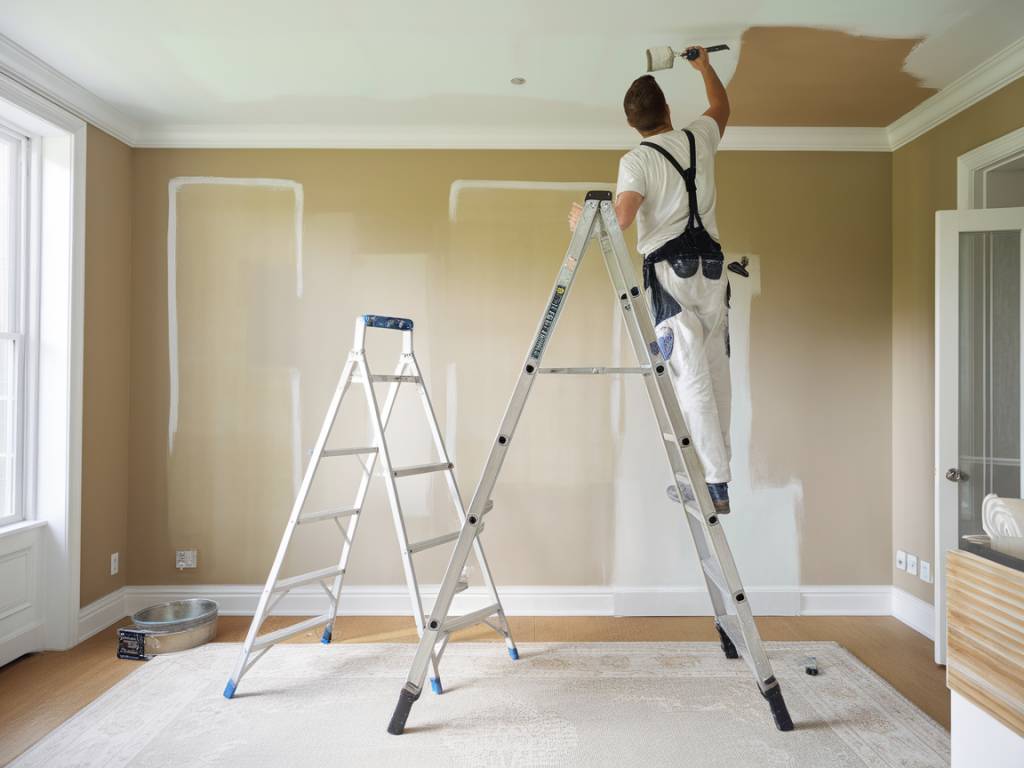Preparing the Room for Painting
Before you start painting, proper preparation is crucial in achieving a professional finish. Begin by moving furniture out of the room or to the center and covering it with plastic sheeting. Removing any wall decorations, outlet covers, and switch plates is essential for a seamless paint job. Clean the walls using a mild detergent mixed with water to remove any dirt, grease, or other residues. This ensures a smooth surface for painting.
Next, check for any imperfections on the walls, such as holes, cracks, or dents. Use wall filler or spackling compound to fill these imperfections, and then sand the patched areas smooth. Don’t forget to sand over glossy areas to create a surface that the paint can adhere to better. Vacuum the room and wipe the walls with a damp cloth to remove any sanding dust. Lastly, apply painter’s tape along edges, trim, and other areas you do not want to be painted.
Choosing the Right Paint and Tools
Selecting the appropriate paint type and finish is vital for achieving professional results. For walls, latex paint is a popular choice due to its durability and ease of cleaning. When it comes to the finish, flat or matte is excellent for hiding wall imperfections, while eggshell, satin, or semi-gloss are better for high-traffic areas due to their washability and slightly shiny appearance.
Investing in quality painting tools will make a noticeable difference in the outcome of your project. You’ll need a variety of brushes, including an angled brush for cutting in around edges and corners, and a two-inch trim brush for baseboards and windows. A good quality roller with a roller frame and an extension pole will help you cover larger areas efficiently. Don’t forget paint trays, stir sticks, and drop cloths to protect your floors.
Applying Primer
Primer is an essential element for an even paint finish, especially if you are painting over dark colors, stains, or new drywall. It helps the paint adhere better to the surface and provides a uniform base for your topcoat. Choose a primer that matches your paint type (latex or oil-based).
Start by cutting in the edges with a brush, where the roller cannot reach. Once all the edges and corners are primed, use a roller to apply the primer to the larger wall surfaces. Work in small sections, using a « W » pattern to ensure even coverage. Allow the primer to dry according to the manufacturer’s instructions before proceeding with the paint.
Cutting In and Rolling the Paint
To achieve professional results, start by cutting in around the edges with a brush. This includes corners, baseboards, ceilings, and around doors and windows. Use smooth, even strokes to create a clean line. After cutting in, use a roller to fill in the larger areas.
When rolling, begin at the top of the wall and work your way down. Use a « W » pattern to apply the paint and then fill in the gaps with horizontal strokes. This technique ensures even distribution and minimizes roller marks. Apply the paint in thin, even coats and allow it to dry according to the manufacturer’s recommendations before applying a second coat.
Dealing with Trim and Baseboards
Painting trim and baseboards require patience and precision. Start by wrapping painter’s tape tightly around the areas that border the trim to prevent paint bleed-over. Use a small, angled brush for this task to help you get into all the nooks and crannies.
Paint the trim and baseboards with smooth, steady strokes, working in long sections to avoid visible brush marks. If you’re painting over a darker or more vivid color, you may need to apply more than one coat for full coverage. Allow the first coat to dry thoroughly before applying additional coats. Remove the painter’s tape carefully before the paint is completely dry to avoid pulling off any paint with the tape.
Cleaning Up
Once you’ve finished painting, proper cleanup is essential to maintain your tools and ensure your space returns to normal. Remove painter’s tape before the paint fully dries to prevent peeling. Clean brushes and rollers with warm soapy water if you used latex paint, or with mineral spirits if you used oil-based paint. Wrap brushes in newspaper and keep them in their original shape while they dry.
Discard or store drop cloths as needed, and return furniture and decorations to their original places once the paint is fully dry. Take a final look around to touch up any missed spots or uneven areas. Proper cleanup not only helps maintain the quality of your tools but also leaves you with a professional-looking space ready to enjoy.
Additional Tips for a Professional Finish
Achieving a professional-looking paint job requires some extra tips and tricks. Here are a few worth considering:
By following these detailed steps and tips, you can transform any room into a space that looks as though it was painted by a professional. Proper preparation, tools, and techniques are key to achieving a flawless finish that you can be proud of.
